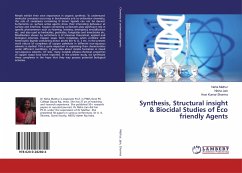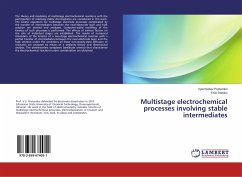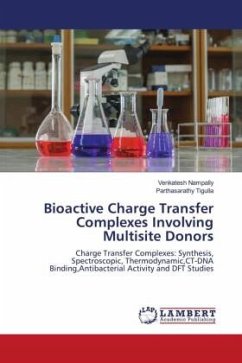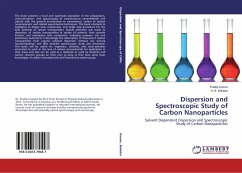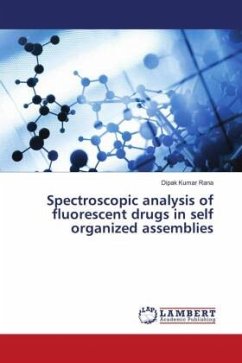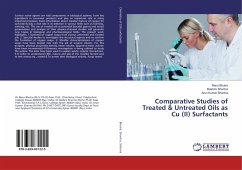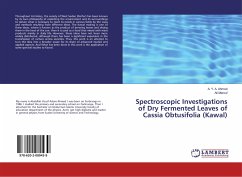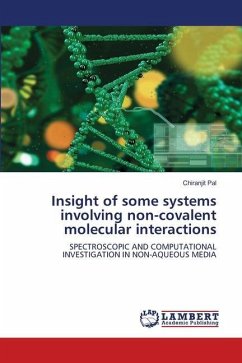
Insight of some systems involving non-covalent molecular interactions
SPECTROSCOPIC AND COMPUTATIONAL INVESTIGATION IN NON-AQUEOUS MEDIA
Versandkostenfrei!
Versandfertig in 6-10 Tagen
40,99 €
inkl. MwSt.

PAYBACK Punkte
20 °P sammeln!
Beyond molecular chemistry, which was recognized for its power over the covalent bond, there has appeared the field of supramolecular chemistry whose purpose is to gain control over the intermolecular region. The supramolecular chemistry helps chemists to prepare structures of different sizes and shapes with dimension in the range of 1 to 100 nm by spontaneous secondary interactions such as hydrogen bonding, charge transfer (CT), dipole-dipole, pi-pi stacking and van der Waals interactions. In this respect, a quantitative study of the formation of such supramolecular complexes has been taken u...
Beyond molecular chemistry, which was recognized for its power over the covalent bond, there has appeared the field of supramolecular chemistry whose purpose is to gain control over the intermolecular region. The supramolecular chemistry helps chemists to prepare structures of different sizes and shapes with dimension in the range of 1 to 100 nm by spontaneous secondary interactions such as hydrogen bonding, charge transfer (CT), dipole-dipole, pi-pi stacking and van der Waals interactions. In this respect, a quantitative study of the formation of such supramolecular complexes has been taken up in this book. With an aim to emphasize attention on the nature of molecular interactions, while trying to compare their magnitude and effects, the objective of the present dissertation has been focused to carry out spectroscopic and computational study of complexation of novel acceptors [60]-fullerene and [70]-fullerene with the simple pi-donor like indenopyridine. Here the electron donor-acceptor complexation processes between the methanatoboron difluoride acceptor and also with host cavitand pi-donor compounds like porphyrin and Cu-phthalocyanine have also been investigated separately.



